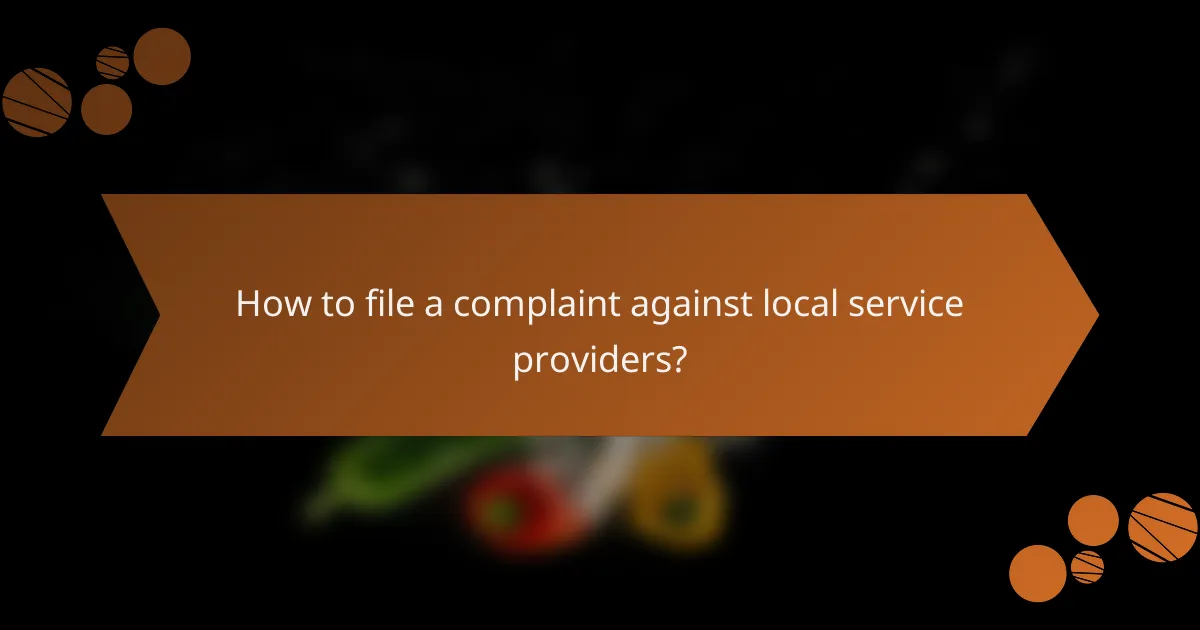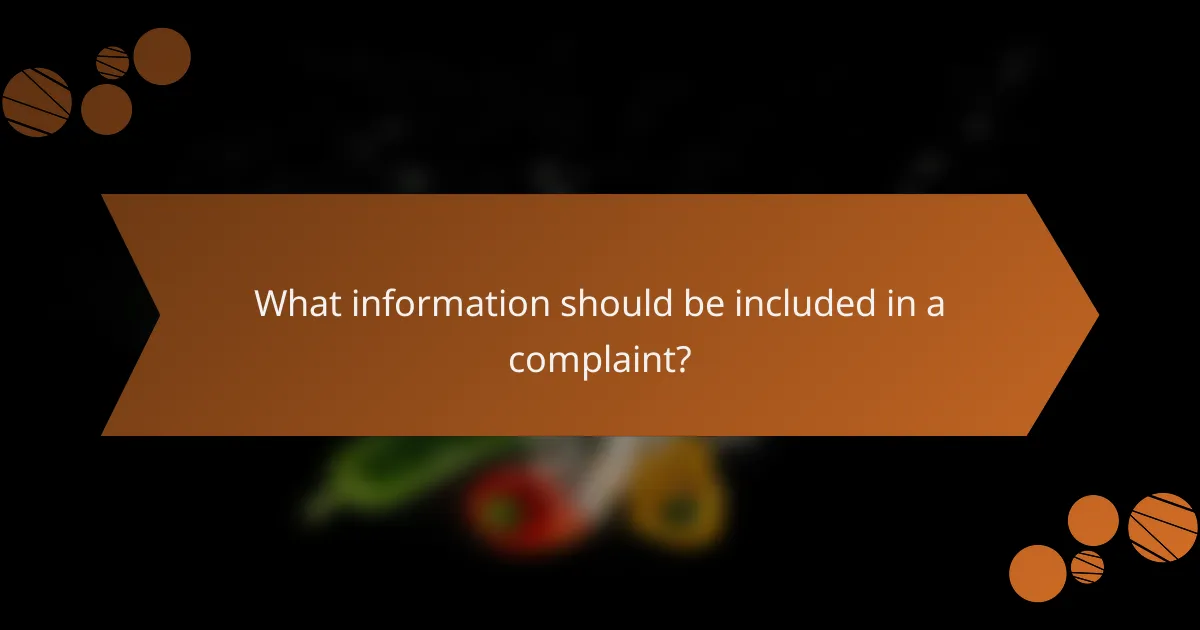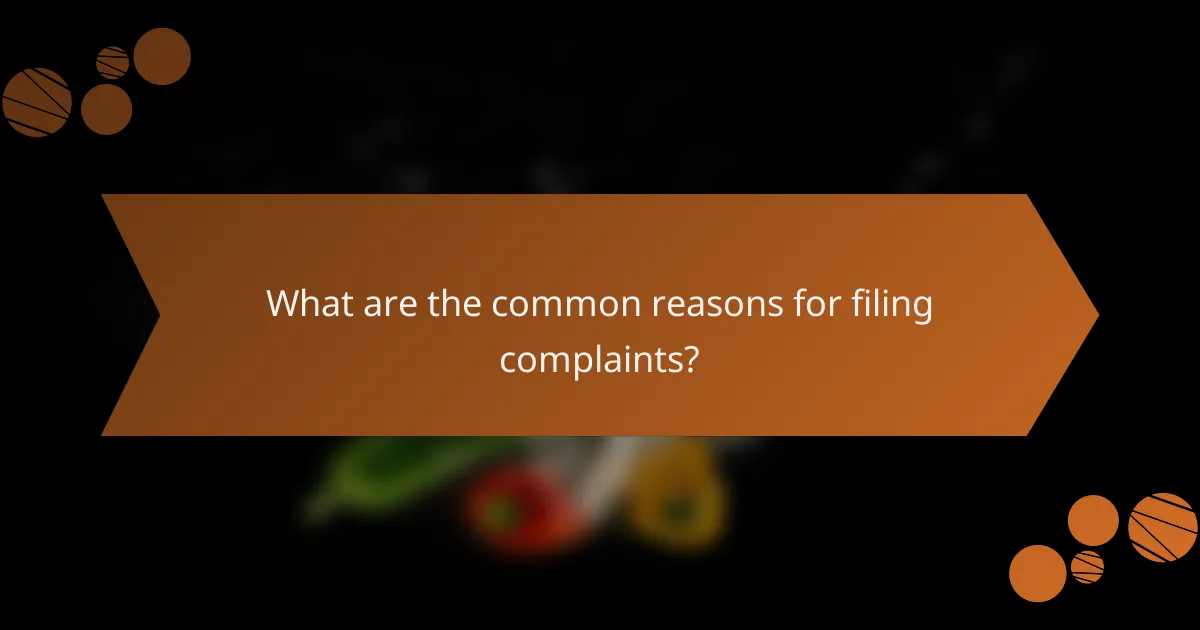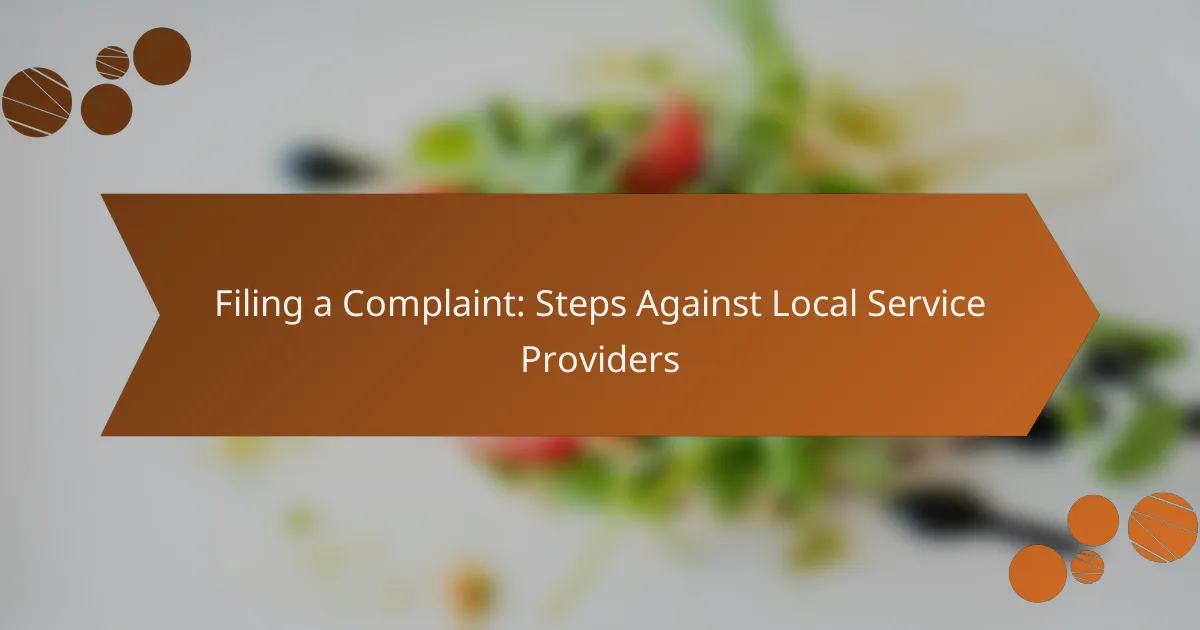Filing a complaint against local service providers is an important step to ensure your concerns are addressed properly. Begin by identifying the provider and collecting relevant documentation to support your case, as a well-structured complaint will facilitate a more effective resolution process.

How to file a complaint against local service providers?
Filing a complaint against local service providers involves a clear process to ensure your concerns are addressed effectively. Start by identifying the provider and gathering necessary documentation before reaching out to the appropriate authority.
Identify the service provider
Begin by clearly identifying the local service provider you wish to complain about. This includes noting their name, contact information, and any relevant service details. If applicable, gather information about the specific employee or department involved.
For example, if your complaint is about a local internet service provider, ensure you have the correct company name and the specific service plan you subscribed to. This will help streamline the complaint process.
Gather relevant documentation
Collect all relevant documentation that supports your complaint. This may include contracts, invoices, receipts, and any correspondence with the service provider. Keep records of dates, times, and the nature of your interactions.
Having a well-organized file of documentation can strengthen your case. For instance, if you experienced service outages, note the dates and durations to provide clear evidence of the issue.
Determine the appropriate authority
Identify the appropriate authority to address your complaint. This could be a regulatory body, consumer protection agency, or an internal complaints department within the service provider. Research the specific procedures for lodging a complaint with each authority.
For example, in the United States, you might contact the Federal Communications Commission (FCC) for telecommunications issues, while in the European Union, you may reach out to the relevant national consumer protection agency.
Submit your complaint
Once you have gathered your documentation and identified the appropriate authority, submit your complaint according to their guidelines. This may involve filling out an online form, sending an email, or mailing a letter. Be clear and concise in your description of the issue.
Follow up on your complaint after submission to ensure it is being processed. Keep a record of any reference numbers or correspondence you receive, as this will be helpful for future inquiries or escalations.

What information should be included in a complaint?
A well-structured complaint should include essential details that clearly outline your issue with the service provider. This information helps ensure your complaint is taken seriously and addressed promptly.
Contact details of the service provider
Include the full name of the service provider, their business address, phone number, and email address. This information is crucial for the complaint to reach the right person or department.
If applicable, mention any specific department or individual you have previously communicated with regarding your issue. This can help expedite the resolution process.
Description of the issue
Clearly describe the problem you encountered, including what service was provided and how it fell short of your expectations. Be specific about dates, times, and locations if relevant.
For example, if you experienced delays, mention how long you waited compared to what was promised. This clarity helps the service provider understand the context of your complaint.
Evidence supporting your claim
Gather any documentation that supports your complaint, such as receipts, contracts, emails, or photographs. This evidence strengthens your case and provides a factual basis for your claims.
Organize your evidence chronologically or by type to make it easy for the service provider to review. Highlight key points that directly relate to your complaint to ensure they are not overlooked.

What are the common reasons for filing complaints?
Common reasons for filing complaints against local service providers include issues related to service quality, unmet contractual obligations, and unethical business practices. Understanding these reasons can help consumers effectively address their grievances and seek resolution.
Poor service quality
Poor service quality is a frequent reason for complaints, encompassing delays, inadequate responses, and unsatisfactory outcomes. For instance, if a plumbing service fails to fix a leak properly, customers may feel justified in filing a complaint.
When experiencing poor service, document specific instances, such as dates and details of the service provided. This evidence can strengthen your case when approaching the service provider or regulatory body.
Failure to meet contractual obligations
Failure to meet contractual obligations occurs when a service provider does not fulfill the terms agreed upon in a contract. This can include not delivering services on time or not providing the agreed-upon quality of work.
Review your contract carefully to identify any breaches. If a landscaping company promised to complete work by a certain date and failed to do so, this can be grounds for a formal complaint. Keep records of all communications regarding the contract.
Unethical business practices
Unethical business practices involve actions that are misleading or exploitative, such as false advertising or hidden fees. For example, if a service provider advertises a low price but adds unexpected charges later, this can be considered unethical.
To address unethical practices, gather evidence such as advertisements, receipts, and correspondence. Reporting these practices to consumer protection agencies can help hold businesses accountable and protect other consumers.

How long does the complaint process take?
The complaint process duration can vary significantly based on the service provider and the complexity of the issue. Generally, it can take anywhere from a few days to several weeks to receive a response or resolution.
Typical response times
Most local service providers aim to acknowledge complaints within a few business days. A full resolution may take one to four weeks, depending on the nature of the complaint and the provider’s internal processes.
For example, utility companies often have specific timelines mandated by regulations, typically requiring them to resolve issues within a month. In contrast, smaller service providers might take longer due to limited resources.
Factors affecting duration
Several factors can influence how long the complaint process takes. The complexity of the complaint, the responsiveness of the service provider, and the volume of complaints they are handling at the time can all play significant roles.
Additionally, if the complaint requires investigation or coordination with third parties, such as contractors or suppliers, this can extend the timeline. It’s advisable to follow up regularly to ensure your complaint is being addressed promptly.

What are the potential outcomes of a complaint?
Filing a complaint against a local service provider can lead to several potential outcomes, including resolution of the issue, compensation or refunds, and disciplinary action against the provider. Understanding these outcomes can help you set realistic expectations and determine the best course of action.
Resolution of the issue
The primary outcome of a complaint is often the resolution of the issue that prompted the complaint. This may involve the service provider correcting a mistake, fulfilling a service that was not delivered, or addressing customer dissatisfaction directly. For example, if a contractor failed to complete a job as agreed, they might agree to finish the work at no extra cost.
To facilitate resolution, clearly communicate your concerns and provide any supporting documentation. This can include contracts, receipts, or correspondence. Keeping a record of all interactions can also be beneficial in case further action is needed.
Compensation or refunds
Another possible outcome is receiving compensation or a refund. If the service was not delivered as promised, or if you incurred additional costs due to the provider’s negligence, you may be entitled to a partial or full refund. Compensation can also take the form of discounts on future services or additional services at no charge.
When seeking compensation, be specific about what you believe is fair. For instance, if you paid $200 for a service that was not completed, you might request a full refund. Be prepared to negotiate, as providers may offer alternative solutions.
Disciplinary action against the provider
In some cases, complaints can lead to disciplinary action against the service provider. This is more common in regulated industries, such as healthcare or finance, where providers must adhere to specific standards. If a provider consistently fails to meet these standards, they may face penalties, fines, or even loss of their license.
If you believe the provider’s actions warrant disciplinary action, consider reporting them to the relevant regulatory body. Provide detailed information about your experience and any evidence you have collected. This can help ensure that the provider is held accountable and may prevent similar issues for other customers in the future.

What are the next steps if the complaint is unresolved?
If your complaint against a local service provider remains unresolved, you have several options to escalate the matter. These steps can help you seek a resolution through higher authorities or alternative channels.
Contact a Regulatory Body
Reaching out to a relevant regulatory body is a crucial step if your complaint is not addressed. Depending on the service type, this could be a consumer protection agency or a specific industry regulator. For example, in the U.S., the Federal Trade Commission (FTC) handles complaints against businesses.
When contacting a regulatory body, provide all relevant details, including your initial complaint, any responses received, and supporting documentation. This information will assist them in investigating your issue more effectively.
Consider Mediation or Arbitration
Mediation or arbitration can be effective alternatives to resolve disputes without going to court. Mediation involves a neutral third party helping both sides reach an agreement, while arbitration is a more formal process where an arbitrator makes a binding decision.
Check if the service provider has a mediation or arbitration clause in their contract. If so, follow the outlined process, which may include submitting a request and paying a fee. These methods can often resolve issues more quickly and with less expense than litigation.
File a Lawsuit
If all else fails, filing a lawsuit may be necessary to resolve your complaint. This step should be considered carefully, as it can be time-consuming and costly. Assess whether the potential recovery justifies the legal expenses involved.
Consult with a lawyer to understand your rights and the likelihood of success. They can help you navigate the legal system and determine the best course of action based on your specific situation.
